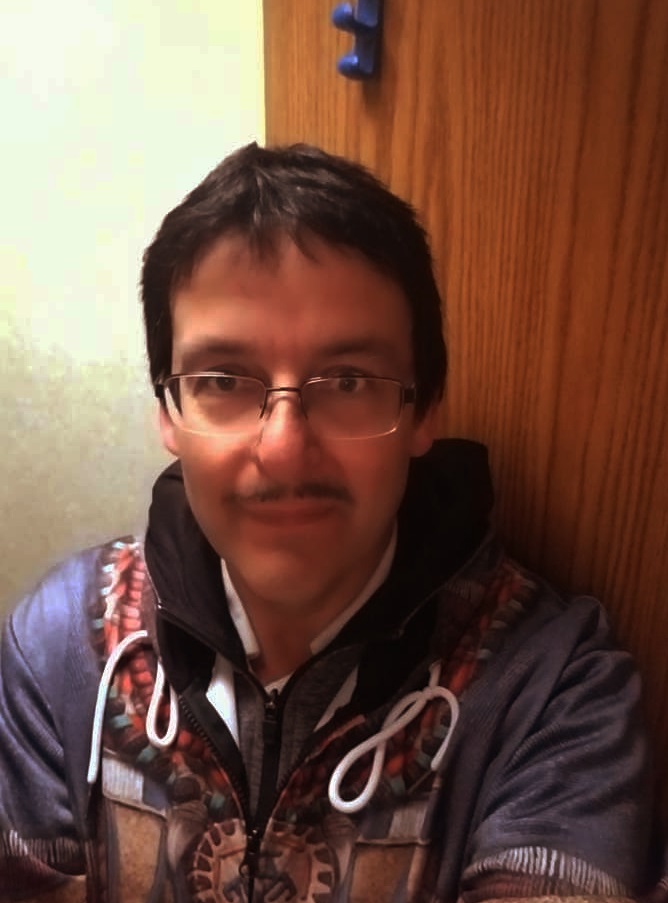
 |
| Thunder Cloud |
Pjila'si (welcome). Borrowed from other tribes - the Dream catcher is not only known to protect us from bad dreams, it is also used as a modern symbol of our culture. People are hanging them in their living room windows and in their automobiles so show their pride in their heritage. We even have the Dream catcher Lodge, in the St. George's Bay area, a facility we should all be proud of. It is a significant landmark that promotes the presence of the Mi'kmaw people. The Dream catcher has a long history, long before the turmoil of culture contamination and destruction that was the result of the European invasion. There are numerous legends from numerous native cultures of Turtle Island (North America); one legend tells that Grandmother Spider, who sang the Universe into existence, was saddened by the bad dreams of her human children.
Grandmother Spider went to the willow tree and asked him for his beautiful branches. She went to the Eagle and asked him for his powerful feather. She then bent the branches of the willow into a circle connecting all the people of the world. She spun her web of wisdom around the willow branches to catch her children's bad dreams. Grandfather Sun's morning rays burned away the bad dreams tangled in the web. Any bad dreams that were left were turned into the morning dew. These dreams trickled down the length of the Eagle feather and were given to the Earth.
A researcher, Frances Densmore, conducted a study of numerous Native American cultures at the beginning of the last century. In her book published in 1929, Chippewa Customs, she describes objects resembling spider webs that were hung from the hoop of a child’s cradle. She said that 'they catch and hold everything evil as a spider's web catches and holds everything that comes into contact with it'. These Dream catchers were wooden hoops with a 3 1/2 in. diameter, woven with a web made of nettle-stalk fiber that was dyed red with the red sap of the root of bloodroot or the inner bark of the wild plum tree.
The common Dream catcher weave seen today is the traditional weave used for other cultural items, most commonly the hoop for the hoop and stick game of many tribes. Woven with strong rawhide with a hole in the center, a child would roll the hoop along the ground and another would try to throw a wooden spear through the hole in the center. The many stories of the dream catcher legend are of recent origin. The original Dream catcher had a very tiny hole in the center and the legend describes ALL dreams being caught in the weaving. For many years, only Ojibwa people made dream catchers as each tribe made only its original crafts. Many modern weavers chose the mid-point weaving style of the hoop and stick instead of the end-point weave of the ancient spider web. Many people, not knowing the significance of the twig or not being able to find the beautiful red willow of the northern woodlands, began to use metal rings wound with leather or string. Now in the time of the Seventh Fire, the traditions are being returned to the people.
Each tribe and clan, however, has its own oral tradition and memory. Passing along that memory by storytelling has not been easy with the traditional culture challenged. Now there are many legends of the Dream catcher from many different Native American cultures.
Here is a Mi’kmaw legend. A Spider was quietly spinning his web in his own space. It was beside the sleeping space of Nokomis, the grandmother. Each Day, Nokomis watched the spider at work, quietly spinning away. One day as she was watching him, her grandson came in "Nokomis-iya!" he shouted, glancing at the spider. He stomped over to the spider, picked up a shoe and was about to hit it. "No-keegwa," the old lady whispered, "don't hurt him." When the boy left, the spider went to the old woman and thanked her for saving his life. He said to her, "For many days you have watched me spin and weave my web. You have admired my work. In return for saving my life, I will give you a gift. " He smiled and moved away, spinning as he went. Soon the moon glistened on a magical silvery web moving gently in the window. "See how I spin?" he said. "See and learn, for each web will snare bad dreams. Only good dreams will go through the small hole. This is my gift to you. Use it so that only good dreams will be remembered. The bad dreams will become hopelessly entangled in the web.”
Authenticity is difficult, if not impossible, given the intermarriage among many tribes, with non-Indians, and the loss of the continuity historically provided by traditional elders. The Dream catcher is not for children alone, it is for all of us.
Before use, the dream catcher is often cleansed in a ceremony of purification by passing them through the smoke of smoldering sage of the sage ceremony. Sometimes, if the dream catcher is not in a well-lit room, it becomes overloaded with energies that need to be cleared. For us, each breath is a prayer and so each dream catcher is woven with the energies of love and blessing. Wela’lin (thank you).
Compiled by Jasen S. Benwah
Local Mi'kmaq Researcher
Cape St. George, NL.(Ktaqamkuk)
Wantaqo'ti, (peace).
As submitted Sept 15, 2004 The Georgian
Website Copyright © 2005 Benoit First Nation